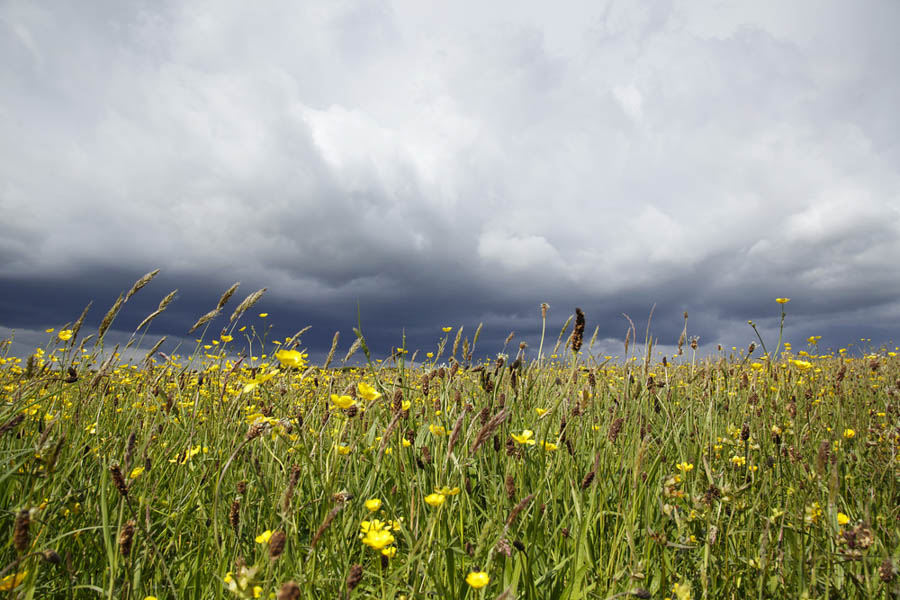Preparing for Rain in California Gardens

Part 1 in the GardenZeus series “Gardening Tips for Rain and Rainstorms”
Have you ever stopped to realize that because of dry summers in most of California, garden vegetables, agricultural crops, and annual flowers may live out their entire lifespans, from germination through harvest, without ever receiving a drop of natural rain?
California is climatically diverse but primarily has a dry Mediterranean climate. Much of the state receives little or no rainfall from spring to fall. In drier areas of California the winter storms tend to be sparse and short-lived, scattered across months, with individual rain events that often may hardly moisten soil surface in our gardens.
When rainy periods or heavier storms do arrive, for drier areas maybe only once or twice per winter or even once or twice over a period of a few years, how can we take advantage of them in our gardens?
Start by turning off irrigation as far in advance of a larger storm as possible. Most established plants can go days to weeks without irrigation during cool weather, and most lawns are fine for at least a week or 2 without watering during winter. Larger shrubs and trees may not need any irrigation whatsoever from fall through spring during years with normal rainfall, even in Southern drier or desert areas. Don’t wait until you hear the sound of rain on the roof to shut off your watering system; when a big storm is on the way, better to anticipate and turn it off early.
How about seeding and planting vegetables before rain? With preparation and careful attention to a few details, this will help get your plants off to a good start and save time, effort, and water. For fall and winter rains, you will succeed best in most California areas by choosing cool-season crops for both seeds and seedlings. Use caution with seeds that tend to rot at low temperatures, such as peas and other legumes. If rainstorms will be accompanied by cold weather, these seeds are better germinated indoors in a covered glass dish before planting outdoors prior to rain. See our customized planting information for your zip code at GardenZeus.com for more information.
Cool-season seeds that germinate well at lower temperatures in the 50s or even 40s, and generally do well if seeded directly in the ground before rain, include lettuce, spinach, radishes, beets, and chard. Keep in mind that small seeds may migrate, gather at the sides or at lower areas in planting beds, or be washed away in loose, newly cultivated soils. This will happen particularly during heavy rains or on sloped ground. For rains later in winter or early in spring with warm weather and sunlight in the forecast, consider planting warm-season seedlings or seeds that need higher temperatures to germinate, such as beans, tomatoes, cucumbers, and squash.
Soil compaction is the main but sometimes unknown garden enemy during and after heavy rainstorms. Check and refresh mulch before storms arrive, especially in areas with young seedlings. This will help to minimize erosion that may expose plant roots, and reduce soil compaction from the natural impact of heavy rain. Make a plan to avoid foot traffic and keep people and pets out of garden areas while soil is wet. Designate mulched pathways or put stepping stones into place so you can entirely avoid stepping on cultivated areas.
California winter rainstorms are a prime chance to clear salts from houseplants or larger potted plants and trees that may be under house eaves or otherwise not exposed to rain.
See Part 2 of this article series, California Gardening During Rainstorms: Flush Salts and Avoid Soil Compaction, for information about clearing salts from potted plants and other tips.
See the other articles in this series:
Part 2: California Gardening During Rainstorms: Flush Salts and Avoid Soil Compaction
Part 3: Benefits of Rain For California Gardens
Part 4: California Gardening After the Storm: What to do When the Sun Comes Out